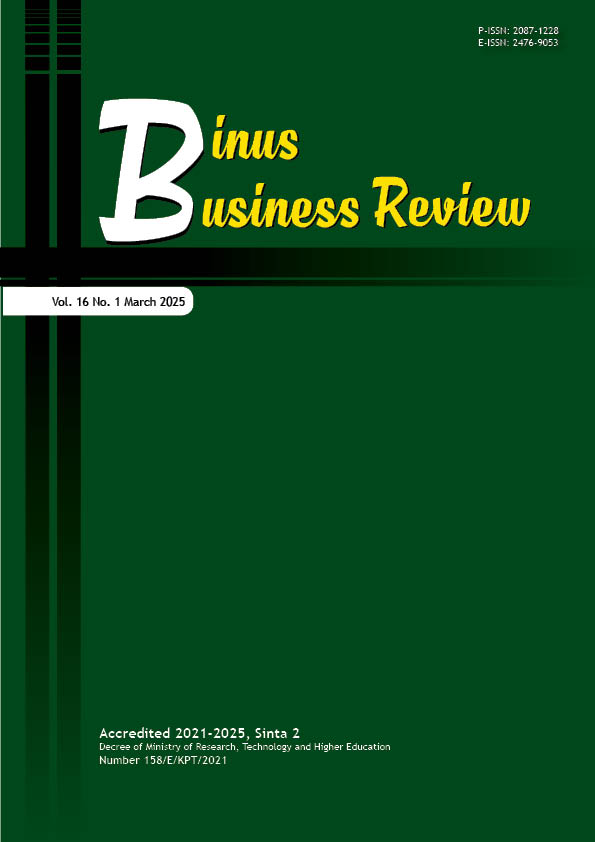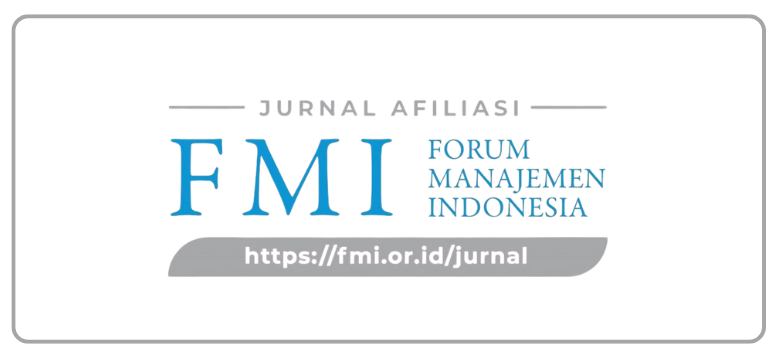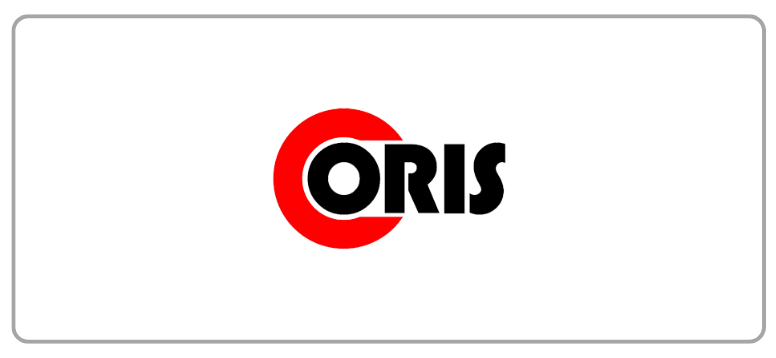The Mediating Role of Brand Image in the Relationships between Interactivity, Electronic Word of Mouth (E-WOM), and Purchase Intention among Generation Z
DOI:
https://doi.org/10.21512/bbr.v16i1.12080Keywords:
brand image, interactivity, Electronic Word of Mouth (E-WOM), purchase intention, Generation ZAbstract
The world is still evolving, and in this era of disruption, everything is based on digital technology. A new phenomenon has emerged in the business world in recent years, namely the bankruptcy of a number of large companies in Indonesia like Giant and the closure of several Carrefour outlets and Matahari Department Store. The research aimed to analyze the effect of interactivity and Electronic Word of Mouth (E-WOM) on the intention to purchase Erigo products with the brand image as a mediating variable on Generation Z in Denpasar City. As the respondents, 208 samples from Denpasar City’s Generation Z population were selected using a purposive selection technique. The analysis method used was Structural Equation Modeling (SEM) through Partial Least Squares (PLS-SEM). As a result, Generation Z in Denpasar City is positively and significantly influenced by brand image, E-WOM, and interactivity when it comes to their intention to buy Erigo fashion items. When it comes to the purchase intention for Erigo products, brand image has the ability to mediate the impact of TikTok interactivity and E-WOM. The managerial implications include the need for Erigo management to focus on the factors influencing potential customers’ decisions to purchase Erigo products, specifically interactivity, E-WOM, and brand image.
References
Al Dmour, H., Aloqaily, A., Al Qaimari, R., & Al Hassan, M. (2021). The effect of the electronic word of mouth on purchase intention via the brand image as a mediating factor: An empirical study. International Journal of Networking and Virtual Organisations, 24(2), 182–199. https://doi.org/10.1504/ijnvo.2021.10037256
Aljumah, A., Nuseir, M. T., & Alshurideh, M. T. (2021). The impact of social media marketing communications on consumer response during the COVID-19: Does the brand equity of a university matter? In M.T. Alshurideh, A. E. Hassanien, & R. Masa’deh (Eds.), The effect of Coronavirus Disease (COVID-19) on business intelligence (Vol. 334, pp. 367–384). Springer. https://doi.org/10.1007/978-3-030-67151-8_21
Alsoud, M., Al-Muani, L., & Alkhazali, Z. (2022). Digital platform interactivity and Jordanian social commerce purchase intention. International Journal of Data and Network Science, 6, 285–294. https://doi.org/10.5267/j.ijdns.2022.1.009
Andini, S., & Suryana, F. (2023). Digital entrepreneurship 4.0. CV. Mitra Cendekia Media.
Anshori, A. S., Mukhsin, M., Suhendra, I., & Haryadi, D. (2022). Accuracy of compensation and competency improvement in improving performance, knowledge sharing as an intervening variable. Enrichment: Journal of Management, 12(3), 2201–2209.
Armawan, I., Sudarmiatin, Hermawan, A., & Rahayu, W. P. (2023). The effect of social media marketing, SerQual, eWOM on purchase intention mediated by brand image and brand trust: Evidence from Black Sweet Coffee Shop. International Journal of Data and Network Science, 7, 141–152. https://doi.org/10.5267/j.ijdns.2022.11.008
Boubker, O., & Douayri, K. (2020). Dataset on the relationship between consumer satisfaction, brand attitude, brand preference and purchase intentions of dairy product: The case of the Laayoune-Sakia El Hamra region in Morocco. Data in Brief, 32, 1–7. https://doi.org/10.1016/j.dib.2020.106172
Dinas Komunikasi, Informatika dan Statistik Kota Denpasar. (2022, December 20). Denpasar raih nilai tertinggi indek masyarakat digital Indonesia. https://www.kominfostatistik.denpasarkota.go.id/berita/denpasar-raih-nilai-tertinggi-indek-masyarakat-digital-indonesia
Dwivedi, Y. K., Ismagilova, E., Hughes, D. L., Carlson, J., Filieri, R., Jacobson, J., ... & Wang, Y. (2021). Setting the future of digital and social media marketing research: Perspectives and research propositions. International Journal of Information Management, 59, 1–37. https://doi.org/10.1016/j.ijinfomgt.2020.102168
Febriyantoro, M. T. (2020). Exploring YouTube marketing communication: Brand awareness, brand image and purchase intention in the millennial generation. Cogent Business & Management, 7(1), 1–17. https://doi.org/10.1080/23311975.2020.1787733
Guha, S., Mandal, A., & Kujur, F. (2021). The social media marketing strategies and its implementation in promoting handicrafts products: A study with special reference to Eastern India. Journal of Research in Marketing and Entrepreneurship, 23(2), 339–364. https://doi.org/10.1108/JRME-07-2020-0097
Herrando, C., Jiménez-MartÃnez, J., MartÃn-De Hoyos, M. J., Asakawa, K., & Yana, K. (2023). Emotional responses in online social interactions: The mediating role of flow. Asia Pacific Journal of Marketing and Logistics, 35(7), 1599–1617. https://doi.org/10.1108/APJML-02-2022-0091
Hewei, T. (2022). Factors affecting clothing purchase intention in mobile short video app: Mediation of perceived value and immersion experience. PLoS ONE, 17(9), 1–18. https://doi.org/10.1371/journal.pone.0273968
Hussain, M., Islam, T., & Rehman, S. U. (2023). What you see is what you get: Assessing in-game advertising effectiveness. Journal of Research in Interactive Marketing, 17(4), 527–543. https://doi.org/10.1108/JRIM-03-2022-0087
Ibrahim, B. (2022). Social media marketing activities and brand loyalty: A meta-analysis examination. Journal of Promotion Management, 28(1), 60–90. https://doi.org/10.1080/10496491.2021.1955080
Khan, I. (2022). Do brands’ social media marketing activities matter? A moderation analysis. Journal of Retailing and Consumer Services, 64. https://doi.org/10.1016/j.jretconser.2021.102794
Kim, A. J., & Ko, E. (2012). Do social media marketing activities enhance customer equity? An empirical study of luxury fashion brand. Journal of Business Research, 65(10), 1480–1486. https://doi.org/10.1016/j.jbusres.2011.10.014
Lee, J. E., Goh, M. L., & Mohd Noor, M. N. B. (2019). Understanding purchase intention of university students towards skin care products. PSU Research Review, 3(3), 161–178. https://doi.org/10.1108/prr-11-2018-0031
Malarvizhi, C. A., Al Mamun, A., Jayashree, S., Naznen, F., & Abir, T. (2022). Modelling the significance of social media marketing activities, brand equity and loyalty to predict consumers’ willingness to pay premium price for portable tech gadgets. Heliyon, 8(8), 1–13. https://doi.org/10.1016/j.heliyon.2022.e10145
Mehyar, H., Saeed, M., Baroom, H., Al-Ja’afreh, A., & Al-Adaileh, R. (2020). The impact of electronic word of mouth on consumers purchasing intention. Journal of Theoretical and Applied Information Technology, 98(02), 183–193.
Nijssen, E. J., & Ordanini, A. (2020). How important is alignment of social media use and R&D–Marketing cooperation for innovation success? Journal of Business Research, 116, 1–12. https://doi.org/10.1016/j.jbusres.2020.04.056
Park, M., Im, H., & Kim, H. Y. (2020). “You are too friendly!†The negative effects of social media marketing on value perceptions of luxury fashion brands. Journal of Business Research, 117, 529–542. https://doi.org/10.1016/j.jbusres.2018.07.026
Petcharat, T., & Leelasantitham, A. (2021). A retentive consumer behavior assessment model of the online purchase decision-making process. Heliyon, 7(10), 1–18. https://doi.org/10.1016/j.heliyon.2021.e08169
Pratama, A. A. N., Hamidi, M. L., & Cahyono, E. (2023). The effect of halal brand awareness on purchase intention in indonesia: The mediating role of attitude. Cogent Business & Management, 10(1), 1–18. https://doi.org/10.1080/23311975.2023.2168510
Putri, S. W. D. G., & Nilowardono, S. (2021). The influence of brand image, service quality, and social media marketing on purchase decision at restaurant Navy Seals Surabaya. Quantitative Economics and Management Studies, 2(4), 251–260. https://doi.org/10.35877/454RI.qems322
Qin, C., Zeng, X., Liang, S., & Zhang, K. (2023). Do live streaming and online consumer reviews jointly affect purchase intention? Sustainability, 15(8), 1–19. https://doi.org/10.3390/su15086992
Rahman, M. A., Abir, T., Yazdani, D. M. N., Hamid, A. B. A., & Al Mamun, A. (2020). Brand image, eWOM, trust and online purchase intention of digital products among Malaysian consumers. Journal of Xi’an University of Architecture & Technology, XII(III), 4935–4946.
Savitri, C., Hurriyati, R., Wibowo, L. A., & Hendrayati, H. (2022). The role of social media marketing and brand image on smartphone purchase intention. International Journal of Data and Network Science, 6, 185–192. https://doi.org/10.5267/j.ijdns.2021.9.009
Sefudin, A., & Darwin, M. (2020). Perbandingan teori disrupsi pada marketing di era Industri 4.0 menurut Hermawan Kartajaya dan Rhenald Kasali. KOMITMEN: Jurnal Ilmiah Manajemen, 1(2), 25–39. https://doi.org/10.15575/jim.v1i2.10315
Suparno, C. (2020). Online purchase intention of halal cosmetics: S-O-R framework application. Journal of Islamic Marketing, 12(9), 1665–1681. https://doi.org/10.1108/JIMA-09-2019-0192
Syafiq, M., Sirojuzilam, Badaruddin, & Purwoko, A. (2022). The influences of accessibility, information technology and social capital on coastal development in Indonesia: The mediating role of port development. Ocean & Coastal Management, 223. https://doi.org/10.1016/j.ocecoaman.2022.106156
Tang, F. (2020). The more interactivity the better? Investigating interactivity, task complexity, and product knowledge in online purchase decisions. Information Technology and Management, 21, 179–189. https://doi.org/10.1007/s10799-020-00316-2
Yohana, N. K. Y., Dewi, K. A. P., & Giantari, I. G. A. K. (2020). The role of brand image mediates the effect of Electronic Word of Mouth (E-WOM) on purchase intention. American Journal of Humanities and Social Sciences Research, 1, 215–220.
Zarei, A., Farjoo, H., & Bagheri Garabollagh, H. (2022). How Social Media Marketing Activities (SMMAs) and brand equity affect the customer's response: Does overall flow moderate it? Journal of Internet Commerce, 21(2), 160–182. https://doi.org/10.1080/15332861.2021.1955461
Zulkarnain, M., & Abdul, L. (2021). Kualitas produk, servicescape dan word of mouth serta pengaruhnya terhadap keputusan pembelian ulang. Business Innovation and Entrepreneurship Journal, 3(1), 38–44.
Downloads
Published
How to Cite
Issue
Section
License
Copyright (c) 2025 Kadek Masakazu, I Gusti Ngurah Satria Wijaya, Gede Suwardika, I Ketut Putu Suniantara

This work is licensed under a Creative Commons Attribution-ShareAlike 4.0 International License.
Authors who publish with this journal agree to the following terms:
a. Authors retain copyright and grant the journal right of first publication with the work simultaneously licensed under a Creative Commons Attribution License - Share Alike that allows others to share the work with an acknowledgment of the work's authorship and initial publication in this journal.
b. Authors are able to enter into separate, additional contractual arrangements for the non-exclusive distribution of the journal's published version of the work (e.g., post it to an institutional repository or publish it in a book), with an acknowledgment of its initial publication in this journal.
c. Authors are permitted and encouraged to post their work online (e.g., in institutional repositories or on their website) prior to and during the submission process, as it can lead to productive exchanges, as well as earlier and greater citation of published work.
USER RIGHTS
All articles published Open Access will be immediately and permanently free for everyone to read and download. We are continuously working with our author communities to select the best choice of license options, currently being defined for this journal as follows: Creative Commons Attribution-Share Alike (CC BY-SA)





















